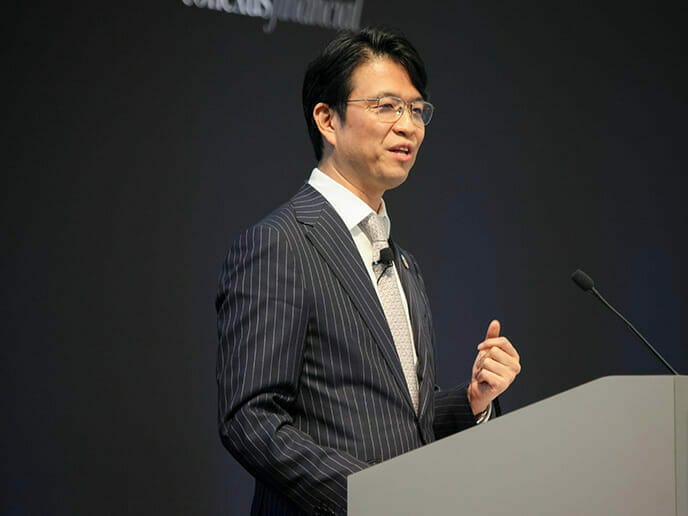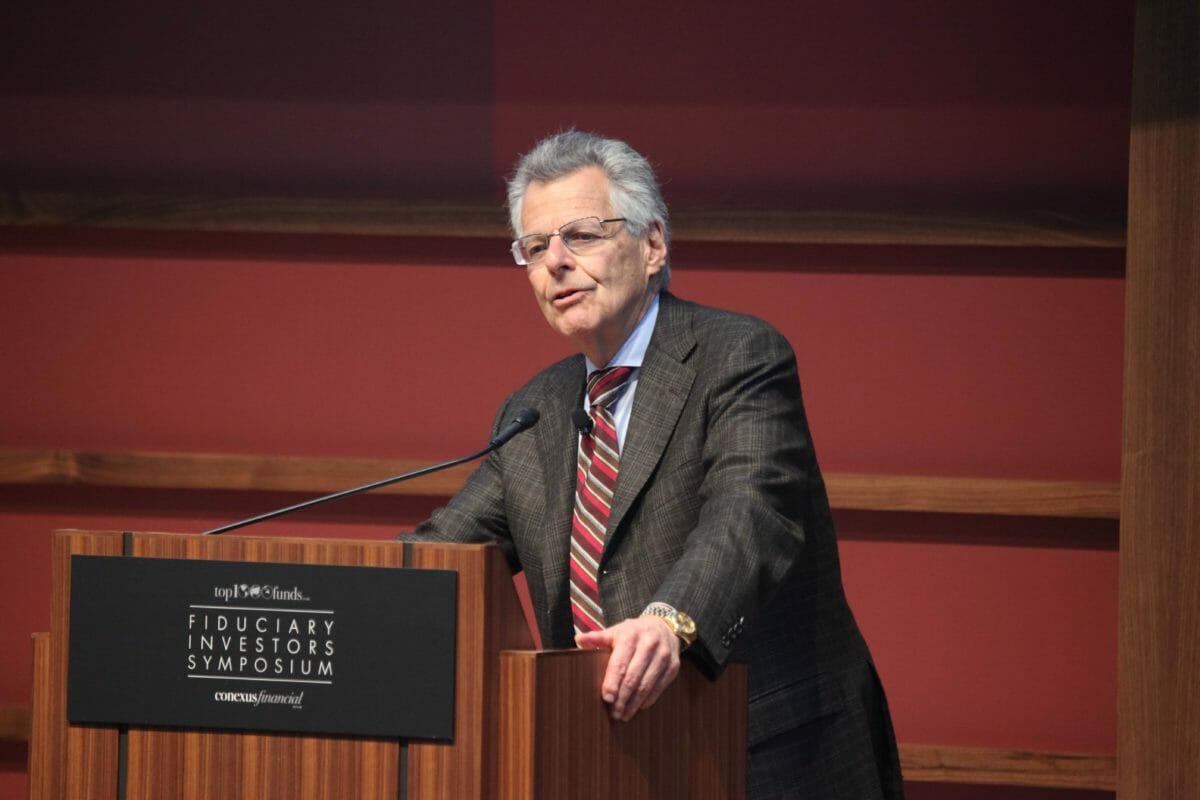Listen to the full speech by Hiro Mizuno on Where to for asset owners? How can investors embrace the ideas presented at this conference? From embracing disruption in energy markets, and fintech, to innovation around fees, and the better use of AI. The chief investment officer of the world’s largest institutional investor, the $1.5 trillion Government Pension Investment Fund of Japan, will discuss how large asset owners should embrace the future to create a better world.

Hiro Mizuno, executive managing director and CIO of Japan’s $1.5 trillion Government Pension Investment Fund (GPIF), described himself as an unconventional CIO. Closing the Fiduciary Investors Symposium at Stanford University, Mizuno told delegates about the far-reaching changes he has introduced at the world’s biggest pension fund in the three years since he joined.
Much of that change has been driven by his belief that integrating ESG throughout the portfolio, starting with equity and now in fixed income and alternatives, too, is key for a long-term, cross-generational investor.
Perhaps the most breakthrough change is that GPIF, which outsources all management, now uses artificial intelligence to monitor its asset managers. By studying the impact of artificial intelligence on asset management, in a project with Sony Computer Science Laboratories, the pension fund is now able to see exactly where its asset managers are investing. Asset managers don’t always trade as they pitch to us, Mizuno told delegates. By collecting daily data, the fund has found discrepancies between what fund managers report and what AI reveals.
Along with providing a window into different asset manager’s styles in action, the information allows the pension fund to change the premise of its conversations with its asset managers. It is no longer a question or asset managers coming to GPIF headquarters with updates, because GPIF already knows how their managers are investing.
“It takes away their chance to pitch their story to us,” Mizuno said. He noted that many asset owners have been poorly resourced in the past, they haven’t used data from their asset managers and have been “at their mercy”, but AI has changed this.
Mizuno has also made changes in GPIF’s managers by pushing them to be long-term. Most notably, the fund now demands its passive managers become active owners.
GPIF’s managers were confused and said they were not paid enough, Mizuno recalled. Yet with 80 per cent of GPIF’s equity in passive, these managers have huge voting power. The change required managers to come up with a new business model and those that did so had their fees increased; those that haven’t have had their mandate cut.
The pension fund has also changed its fee structures in other ways. According to the pension fund’s investment and stewardship principles, it gives its managers guidelines but doesn’t dictate how, or where, they should invest.
“We believe in ESG and demand that our active and passive managers engage on critical ESG issues,” Mizuno explained. “We don’t say what these are – we leave asset managers to classify what the critical issues are.”
The new fee structure means that 30 per cent of GPIF’s evaluation of its managers is now based on their stewardship activities; stewardship is the most critical factor in them keeping the mandate.
Active managers have also had to change. Mizuno no longer accepts their traditional alpha targets or capacity limits.
“In our history, less than 20 per cent of active managers ever deliver their target alpha,” Mizuno said.
He grew similarly weary of managers’ arguing that fees couldn’t be discounted because of capacity limits.
“We found that when we asked them if they could take an additional billion dollars, they always said yes,” he said.
Now GPIF has slashed base management fees with its active managers but gives generous performance fees to share the value managers create. This can be as much as a 40 per cent profit sharing, Mizuno said. To push asset managers to focus on the long term, GPIF has also introduced multi-year contracts for active managers and asks managers what market cycles they need to prove themselves.
Given the pension fund’s large passive allocation, Mizuno has also prioritised working with index providers.
“When I am asked who our biggest asset manager is, I answer BlackRock,” Mizuno told delegates. Yet because this investment is mostly passive, it is dictated by the index vendor: “GPIF owns 10 per cent of the Japanese equity market and 1 per cent of MSCI ACWI. It doesn’t make sense to beat the market because, in reality, we are the biggest owner of the benchmark,” he explained.
Last year, GPIF introduced three ESG indices and has just created a new global environmental index, in which it invested $11 billion.



